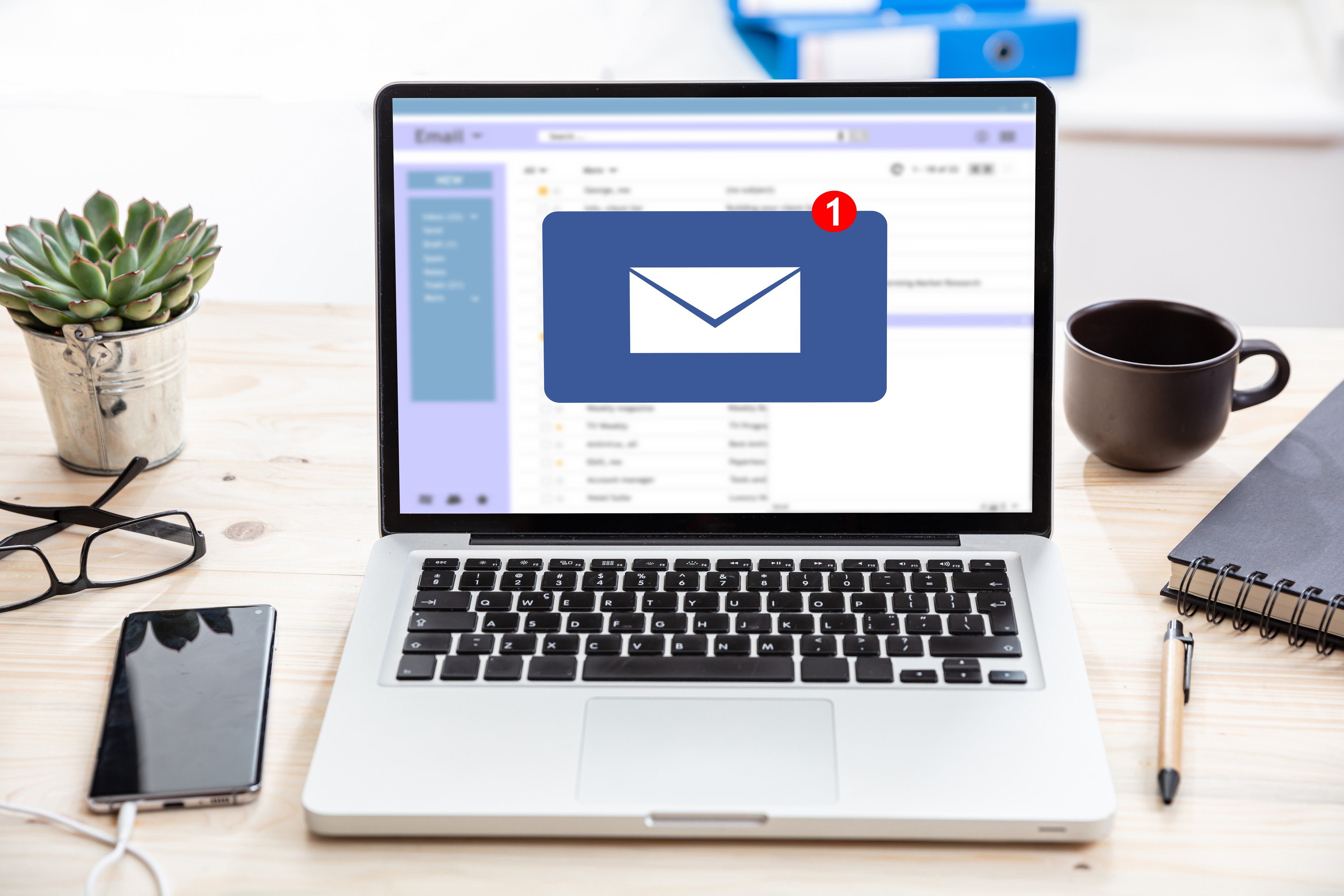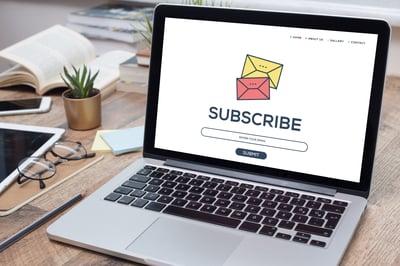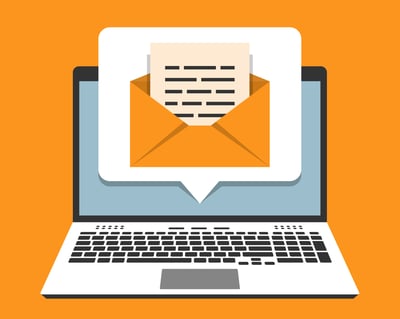
Email marketing has been on the rise and won't be going away any time soon.
Businesses of all calibers are trying to hop on the trend and leverage the benefits of it. However, with the competition being as high as ever, it can be quite a challenge to come up with an engaging email campaign that would both highlight your business’ strengths and be valuable and interesting for the reader.
Luckily, there’s a short-cut strategy for that. An email newsletter is a great way to establish a direct conversation with your target audience to keep them engaged and updated. You can use this opportunity to build a relationship, share content and, most importantly, promote sales.
So if you don’t have an effective email newsletter strategy in place, it’s time to start! In this article, you’ll find the 10 best email newsletter practices with lots of actionable tips.
It’s no secret that committing to producing and distributing a newsletter to your email subscribers on a monthly basis can be a rather time-consuming task. It’s not your average set it and forget it process; it requires a lot of hard work and attention to details. If you want your email newsletter strategy to be effective, you need to stay on track with all the latest trends and regularly adjust it to be up to the highest standard.
The thing is, this onion is definitely worth peeling. Having an effective email newsletter strategy in place comes with a lot of benefits for your business. Here are just a few of the most notable ones:
To leverage the numerous benefits of the email newsletter campaign, you need to ensure that the emails you send to your subscribers are always up to the standard. This requires a lot of attention to details and the implementation of the best email newsletter strategies to boost the performance of your email marketing campaigns.
Here are some of the key strategies and techniques to use when crafting an engaging email newsletter.
One of the key benefits of an email newsletter is that it allows you to deepen your bond and build a robust, friendly relationship with your friends. The last thing you want to do when talking to a friend is being rude.
That’s why it’s important to warm up your new subscribers and welcome them to your mailing list. It’s best to start with a welcome email, or even better, a sequence of welcome emails. Here’s what to include in your campaign.
It’s always exciting to see new people show interest in your brand and join your mailing list. After all, having a large and active list of email subscribers is one of the indicators of your email marketing strategy success. So why not let your newcomers know how much they mean to you and thank them for subscribing to your newsletter.
Besides, according to numerous studies, ‘thank you’ is one of the most powerful words you can use in your email marketing – not only does it instantly grab the reader’s attention, but it also leaves a lasting positive impression – a win-win situation for everyone!
You can also experiment with the shape and form of your gratitude. Depending on the specifics of your business, you can either drop a humble and simple one-liner or go all the way out and pair the ‘thanks’ with a pompous greeting.
Here are a couple of examples you can nick to add to your welcome sequence (just make sure the one you use is in line with your brand):
If you used a lead magnet to lure your newsletter subscribers in, make sure you deliver on your promise and include the link to your e-book, checklist or whatever it is that they were interested in receiving from you in the welcome email. It’s your chance to prove to them that you’re a trustworthy brand that keeps its word.
Even if you didn’t turn to gated content to help you enlarge your subscribers base, you can still offer your new subscribers a welcome gift. It doesn’t have to be anything big - just a nice gesture to show them that you’re excited to see them join you.
Some examples of what you could include in your welcome email for new subscribers:
It’s not right to assume that simply because someone joined your mailing list they know everything about your brand and what you preach. The majority of people subscribe to your newsletter because they found your content interesting and useful, not because they’re your devoted fans. This, however, can be changed.
The welcome sequence is a perfect opportunity to tell your story to the new subscribers. Tell a bit more about who you are, your mission and your values. Preferably, wrap it all into a nicely written story – everyone loves those. Here are a couple of things you can mention in the introduction:
On top of that, you can also use the welcome sequence as an opportunity to talk about what your new subscribers can expect from this communication. Now that they’ve subscribed to your newsletter, they’re different from those blog visitors who haven’t joined the list yet.
Explain how so; provide your new subscribers with a brief overview of the different types of content you will be offering in your newsletters and how often you plan to send those. It’s important to stay transparent, you want your relationship to be built on the premises of mutual trust!
Apart from the types of content you intend to send, you can also mention your plans regarding the following:
You don’t have to limit your communication with the newsletter subscribers to the email outreach only. The welcome sequence is a great way to encourage your new subscribers to follow you on other social media channels such as Twitter, Facebook and Instagram to become an even more integral part of your online community. While it’s not mandatory, establishing more thorough, multichannel contact with your subscribers will keep the momentum going and deepen your bond.
Don’t forget to clearly outline the benefits of following your socials - your newsletter subscribers have already done you a favour by joining your mailing list, and will need a serious reason to commit to your brand even further.
Finally, use the welcome email as a tool for ensuring the deliverability of your subsequent newsletters. If you don’t want the newsletter you’ve worked so hard on producing to remain unopened by the target audience or, even worse, land straight into the spam folder, you need to take care of a couple of things first:
In the modern business world, personalization is the kingpin of success. That’s why if you want your email newsletter strategy to be successful, you need to focus on personalizing your approach. Long gone are the days when you could just simply add your reader’s name in the subject line and the body of your email and call it a day. Today, for your newsletters to be relevant, you need to go beyond basic personalization and offer a holistic special approach.
Giving your new subscribers an opportunity to control the flow of your communication via the subscription control centre allows you to kill two birds with one stone:
In the modern business world, personalization is the key to email marketing success as it’s one of the hottest email marketing trends this year. It needs to be thorough and consistent, and need to go way beyond using macros to refer to your newsletter subscribers by their first and last name.
Thanks to the data you gather during the initial signup process and the data you obtain from the customizations your subscribers make in the emailing preferences, you can build hyper-personalized sequences that would consider the following:
On top of that, you can provide different types of newsletters to different subscribers based on their stage in the sales cycle, and where they entered it - Bottom of the Funnel (BOFU) leads’ preferences are different to those of Top of the Funnel (TOFU) leads. For example,
TOFU leads are best suited for more general content that covers broad topics and includes minimal pre-boarding elements. On the other hand, BOFU leads are almost ready to convert into customers, so you can include more branded content and pre-board in your newsletter content more actively.
To enable personalization, you need to make sure that your email list is segmented. When you have different groups of people that share common interests and characteristics identified, you can provide them with relevant content in a more effective manner. In fact, according to MailChimp’s study, segmented campaigns result in 23% higher open rates, with 49% higher CTR.
There are different segmentation models that you can use to segment your list:
As you can see, there are lots of different ways to approach audience segmentation, and you can pick whichever works best for your business. However, it’s important to follow the best segmentation practices for your actions to lead to the desired outcome:
Although email newsletters are perfect for talking about you and your business - finally, you get a chance to show off your achievements and slyly promote your new shiny products - there needs to be a certain degree of trust between you and your subscribers before you can start selling.
Some of the best ways to do this include:
On top of that, you can also deepen the bond by adding some gestures that show that you care about your subscribers. For instance, you can provide them with exclusive information, give them little incentives such as freebies and discounts, etc.
Based on the data you’ve drawn when analyzing and segmenting your email subscribers, you need to decide on the language you will be using in your emails. Remember that it’s one of the key elements of your newsletters as it sets out the tone for your campaign.
Make sure that your language:
In order for your email newsletter strategy to be effective, you need to make sure that you interact with your list of newsletter recipients:
Another way of keeping your newsletter interactive is to gamify it.
The newsletter format is so appealing to marketers because of the variety of content types it allows them to include. If you want your newsletter to stand out from the competition and leave a long-lasting impression on your subscribers, you can hop on one of the hottest trends in email marketing: email gamification.
There are a few rules to follow when you’re including games into your newsletter email:
Newsletter gamification can be carried out in a number of different ways. It’s up to you to decide the ways in which you want to liven things up. But if you’re looking for inspiration, here are some email gamification ideas for your newsletter to use:
Although newsletters are predominantly informational, you still want to convert your subscribers and nudge them towards taking the desired action – making a purchasing decision, signing up for an event, etc. However, you need to be careful here.
While it’s a great idea to include a call-to-action into your newsletter, make sure you don’t overcomplicate your ask. Instead of being overly pushy with your requests, encourage your subscribers to make a lot of small commitments. Use a micro-yes sequence to build your relationship with subscribers.
Although it’s important to make all your marketing content red-hot and fresh, the very nature of a newsletter suggests that you can sometimes repurpose those.
If you see that your subscribers are not engaging with your newsletters, it’s okay to occasionally send out resend campaigns:
Finally, you need to remember that there’s always room for improvement, and you can always make the newsletter experience better for both you and your subscribers. To identify your strengths and weaknesses, make sure you regularly analyze the performance of your campaigns and, more importantly, ask your email list for feedback.
This can be organized in a variety of ways:
To sum everything up, email newsletters are a great strategy to take a hold of – they can lay out the foundation for your broader email marketing strategy and help you leverage its benefits. Moreover, newsletters aren’t particularly difficult to manage.
If you know the tricks you can build a successful and effective strategy that will let you stay in touch with your email subscribers, build your brand authority and manage your reputation, drive traffic to your website and blog, promote social media engagement, build a more robust relationship with your leads. All of this will eventually help you generate more sales and grow your business. So if you don’t do newsletters yet, it’s time to start!
Valerie Kakovkina is a Marketing Writer at NetHunt CRM. Whenever Valerie isn’t jotting down a new article, she's researching for it – she’s all about details. A devil's advocate by nature, she enjoys discussing controversial topics and picking up on innovative concepts in B2B marketing and sales.
Any relationship, personal or professional, can be dictated by first impressions.
 by Rob Browne
by Rob Browne
We all have brands we feel connected to.
 by Rob Browne
by Rob Browne
How many of the emails that come into your inbox do you actually engage with?
 by Rob Browne
by Rob Browne
Any relationship, personal or professional, can be dictated by first impressions.
 by Rob Browne
by Rob Browne
We all have brands we feel connected to.
 by Rob Browne
by Rob Browne


